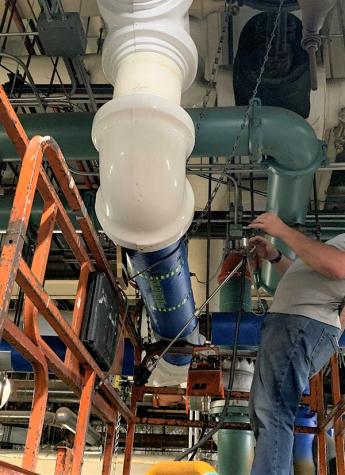Region One PBS Team Gets Innovative on Maintaining Its Buildings

The U.S. General Services Administration’s (GSA) Public Buildings Service (PBS) is one of the major arms of the agency, maintaining more than 370 million square feet of workspace nationwide. With more than 11 million square-feet of buildings to preserve in Region One, the PBS teams must get innovative; and that is exactly what the New England Region did.
The PBS team for Region One thought outside the box when it came to examining the conditions of pipes within the John F. Kennedy Federal Building in Boston.
Similar to a dental X-ray, the team, alongside a contractor, performed ultrasonic testing of pipes in the basement of the 839,000 square-foot building.
The process was done by focusing Iridium-192 gamma rays through the section of pipes to the film on the other side. An image was then captured on traditional photographic film, developed in a dark room, and then examined by the team.
“This form of testing allowed us to non-destructively determine if any piping had decayed without disrupting building operations,” said Region One Mechanical Engineer Rogelio Rivas-Chaparro. “This is my first opportunity to see this testing being performed in person. It is a relatively rare occurrence as pipes tend to have a fairly long life as long as the building is being maintained properly.”
Not only is this form of testing innovative, it can also add value to any upcoming project work by using the technology to accomplish part of GSA’s mission of preserving historic buildings. Since it is nearly impossible to know how much decay a pipe has without cutting out a section of it, utilizing the X-ray technology can save the team from having to repair the section of the piping and interrupt building operations.
“The utilization of such innovative technologies is what makes GSA a great agency,” said Region One Acting Regional Administrator and PBS Regional Commissioner Glenn Rotondo. “We have such amazing, historic buildings in our region and we want to ensure they remain for years to come and the use of X-ray technology in scanning our pipes for deterioration will ultimately assist in that.”

 U.S. General Services Administration
U.S. General Services Administration